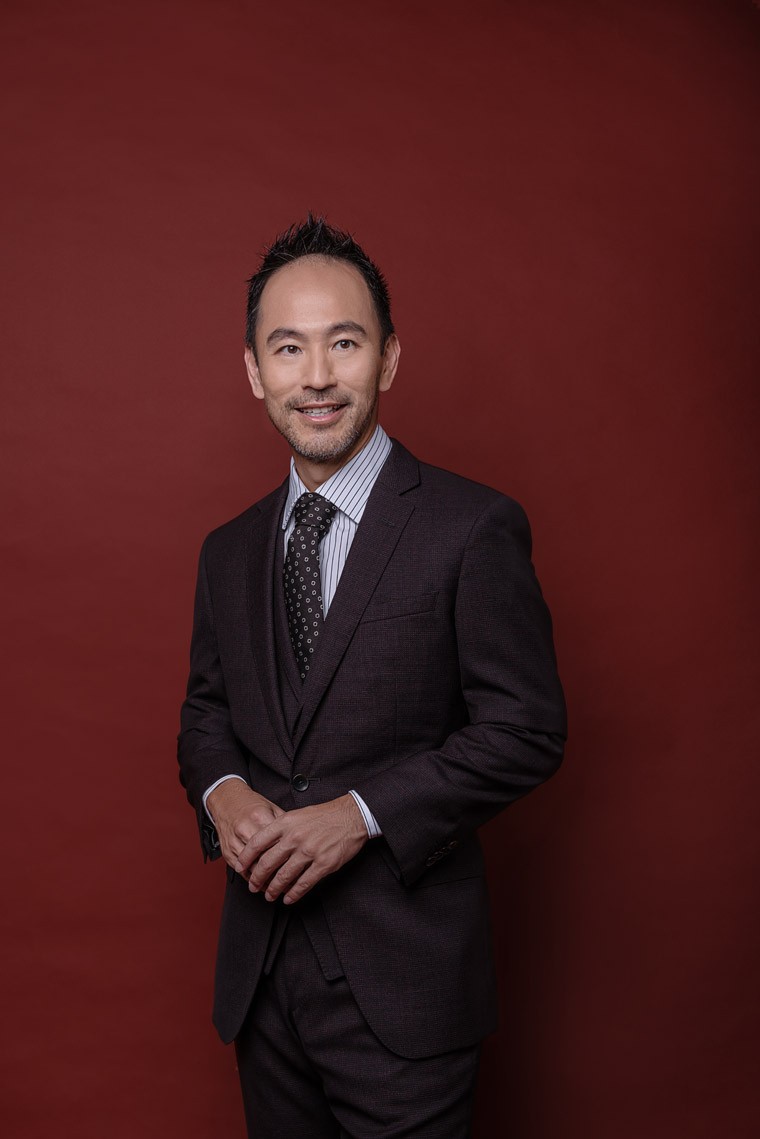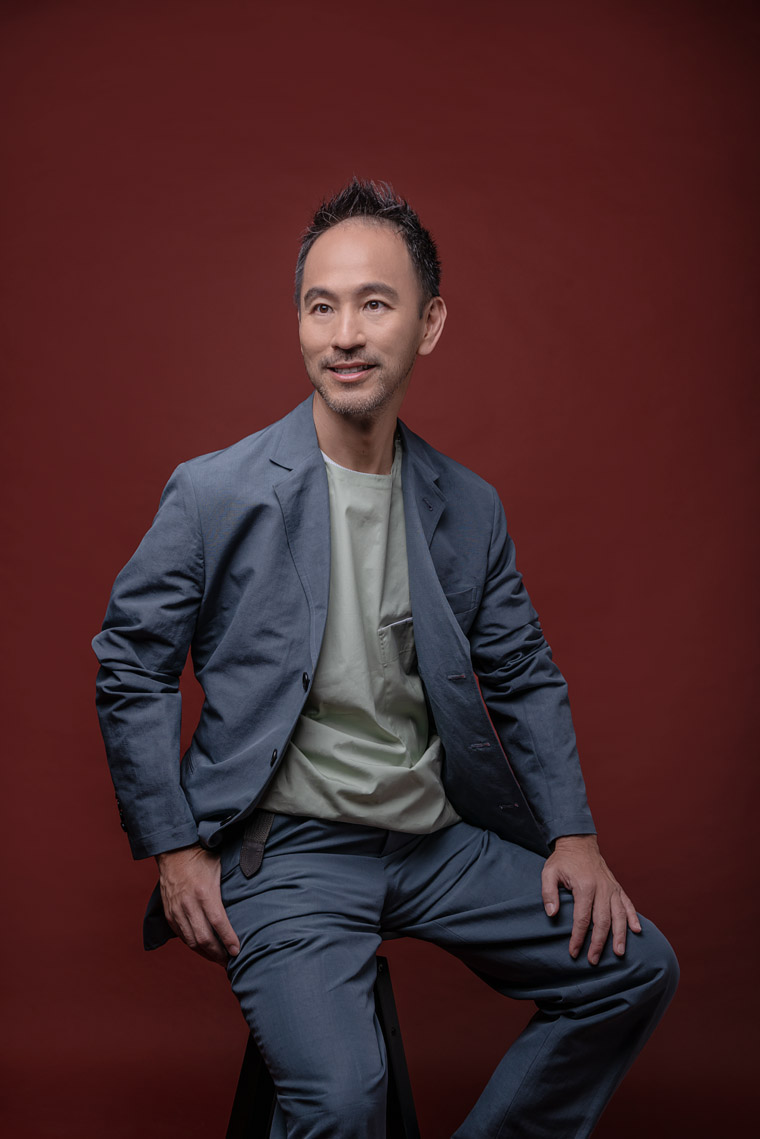While Ong is known for being the Group Executive Chairman of architecture firm Ong & Ong and the son of Singapore’s fifth president, Ong Teng Chong, and architect Ling Siew May, he’s also an avid runner. Not only does he pound the pavement every day before the sun rises (weekends included — “Each day is the same,” Ong exclaims), he has also traversed some of the most challenging landscapes all over the world.
As I flipped through the book, which helped me gain insights into the mind of a runner, a particular line caught my attention: “Running day after day, piling up the races, bit by bit I raise the bar, and by clearing each level I elevate myself… In long distance running the only opponent you have to beat is yourself, the way you used to be.”
Something clicked. It made me want to find out how the 53-year-old elevated himself, given that he’s a vision of success — growing a modest Singapore-based firm from 60 to 1,000 employees across seven countries is no easy feat.
PROFILE
Running at His Own Pace
Photography by Chino Sardea, assisted by Tracey Nguyen
Styling by CK Koo
Grooming by Zoel Tee using IT Cosmetics and Kevin Murphy
10 Feb 2021
One might assume that success came easy for someone like Ong Tze Boon, but he reveals that it was anything but. It took a lot of personal sacrifice, determination, and some wrong decisions along the way to get him to the finish line.
When I found out we were featuring Ong Tze Boon on this issue’s cover, the first thing I did when I got home was to dig for my copy of Haruki Murakami’s memoir, What I Talk About When I Talk About Running.
 Suit, shirt, and tie by BOSS
Suit, shirt, and tie by BOSS
Given your accomplishments over the years, how did you elevate yourself and how was running instrumental on this journey?
Publicly, most people would know that before the age of 30, I had to take over the practice. At that time, I already lost both my parents and that set me up to sink or swim. So I spent 10 years just figuring out to swim.
When I’m asked how I figured it out, my answer is I don’t know. I hit crossroads as you do in life and had to make certain decisions. But instincts kick in and you say, “Okay, I’ll go left.” Have I always been right with my decisions? No. Fortunately, the number of rights outweigh the wrongs, so I’m ahead of the curve. This went on for 10 years while redefining Ong & Ong.
There was a funny instance when I hit 42 years old. One time, when I walked into the office, I loudly exclaimed, “Is the air-con not working?” I took a look around and saw people wearing jackets and cardigans, but I was feeling warm. Then I realized why. I was 90kg. So I told myself, “It can’t be that everyone’s cold, but me.” At that point, I decided that I needed to get my priorities right. It made me realize that we all have the same value system, but we don’t quite prioritize things that have to be at the forefront. I decided that health was paramount and I started exercising, which started with a one kilometer run. Once I could do that comfortably, I scaled up. Right now, I run a minimum of 10km, seven days a week before the sun rises, because like everyone else, I also have work to do.
What does running mean to you now?
It’s now a habit for me, like brushing your teeth. It feels weird if I don’t do it. At the start, it was difficult because when it wasn’t a regular part of my life, I needed someone to push me. Thankfully, I had a friend who would encourage me and ran with me for a few months.
At one point in 2014, around the second year of running, someone told me to join a marathon. I wasn’t too keen on it because of the crowds; too many bottlenecks. But this friend said to me, “What if you could run a marathon without the crowd?” Then that got my attention. So the next thing you know, I joined the Marathon des Sables. So I went from running 10km to running 250km across the Sahara Desert. After that, nothing fazes you!
In 2016, I went to Antarctica and ran across a cold, snowy landscape. After that, I did seven marathons in seven continents in seven days. On these runs, I’ve learned many lessons along the way and I wish I understood all of those lessons earlier in life.
 Jacket, shirt, and trousers by Hermès
Jacket, shirt, and trousers by Hermès
Given the challenges you’ve faced, from taking over the firm to the physical demands of your incredible runs, how did you approach 2020 and the challenges that came along with it?
On the physical side, it was simple, really. Singapore has no mountains for me to climb or wide open trails for me to run across. But the one thing we have is the sea, so all I had to do was recalibrate and go for all the water activities — paddle boarding, kite boarding, foil surfing, wake surfing, and visiting Pulau Ubin. There was no excuse not to go out and be active. I had to push on and just recalibrate.
As for work, that took some recalibration as well. I think with COVID-19, the physical and digital world are being turned on its head. Therefore, it becomes an exciting thing for architecture and interior design to rethink the workplace. We ask ourselves, “What is the relevance of these physical spaces now?” There will surely be a lot of reflecting going on; a lot of rethinking. I think that companies need to lead in their own space.
Two years ago, we started an initiative at Ong & Ong called BeyondX where we bring the best of the best in the world to Singapore to come and talk about what they’re doing in their respective fields; how to digitize things and find out what benefits come out of it and how do we accelerate from there. This is where I’m trying to get the firm to go. We’ll continue doing great architecture and interiors, but we need to shift a little bit intellectually to see where we’re going and be able to provide solutions to whatever we’re brainstorming about.
Aside from Ong & Ong, you also have projects like GoFlow, Charge+, and CoTel in the pipeline. How did the idea for these innovations come about?
Ong & Ong was founded in 1972 and will be celebrating 50 years next year. I had a period of self-reflection and asked myself questions like “What do I have to show for? What stock can I take?” I looked at the buildings we’ve done and other firms also similarly have these.
Then I asked, “Aside from doing what we’re doing, what else can we do?” Seeing that we’re from the build environment — we have engineering, interiors, landscaping, and lighting — I made the decision that we would do something that can impact lives.
I thought about this long and hard and tried to see if could engineer something that would bring clean water to the world. Hence, the birth of GoFlow, which is a lightweight water filter that is driven on rotational motion. This is something I know that people in other countries living in more rural locations can use, particularly those who only have access to well water. Simply put, this invention can bring clean water to you off the grid. Meanwhile, Charge+ is a smart alternating current EV charger that champions clean mobility.
Finally, CoTel is a marriage of the first two projects, which is a container housing concept that’s off the grid too and doesn’t need to plug into an urban system. I see this as something that can be used in mountainous places like Nepal or even in rescue operations in a remote location. Ultimately, what we’re trying to gun for with these projects is making a small difference. If it works, it would be interesting to see how it takes off from there.
It seems your plate is incredibly full. How do you manage all of this?
Less sleep. Literally. I average about five hours of sleep a day.
You can stay awake now. Why do you need to sleep so long? For every one hour less of sleep, do you know how many years you can take back? Roughly three years of additional time to see, feel, touch, and experience; to achieve and to complete.











 Back
Back
